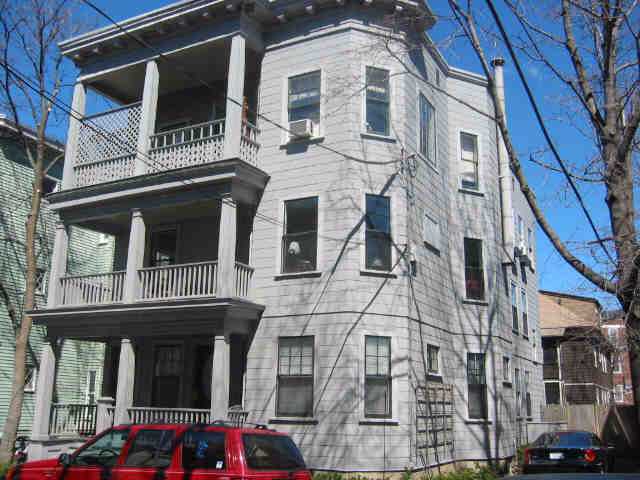Affordability crisis? Try zoning, not rent control
| . Posted in laws, News, policy - 0 Comments
The Boston Globe has implied that rent control or just-cause eviction laws are necessary to keep apartments affordable (March 2015). The Wall Street Journal and Bloomberg recently ran stories titled “Rising Rents Outpace Wages” and “Big Cities Too Expensive for Millennials”. The Boston Tenant Coalition and Boston Agent Magazine have called it an “affordability crisis.” Desperate times call for desperate measures? Like rent control?

Let’s start with what we can agree on. In an ideal world, everyone should be able to live where they want at a price they can afford to pay. Regrettably, there are 4,000 homeless families in Massachusetts alone. Another 150,000 households rely on subsidies in the form of Section 8, Massachusetts Rental Voucher Program, or others. There are more who are on subsidy waiting lists, one paycheck away from financial ruin.
The affordability problem seems real enough. But don’t blame the landlords! There are market and policy forces at work.
According to the January report from CBRE Global Investors, a real estate firm with over $80 billion in assets under management, there are three demographic trends that are driving housing prices up: deindustrialization, changing lifestyle preference, and shifting household composition.
The first trend, deindustrialization, is completing the change-over from manufacturing to service-oriented local economies. Manufacturing businesses, like the Boston Porcelain and Glass Company, have been entirely replaced by law firms and tech startups in neighborhoods like Kendall Square in Cambridge and the South End in Boston. Unlike manufacturing workers, attorneys and programmers demand more luxurious, more expensive housing.
This deindustrialization underscores the second trend, changing lifestyle. The 1950s stereotype of success was a home in the suburbs. Today many aspire to urban chic, which comes with access to entertainment and restaurants. As neighborhoods with fixed housing stock become more popular, prices increase.
The third trend is the change in household composition. In 1960, three-quarters of households were married by their early 20’s and living together; in 2010, only half were married and they were pushing age 30. On average, people are living apart longer and having children later. They now place a heavy demand on housing stock that once catered to singles.
These three trends are driving demand for smaller or fancier apartments in areas that are in high demand. Why don’t landlords – in other words, the market – respond?
Small-time landlords want to respond: They want to rent large apartments to multiple college students, to create safe attic and basement spaces, and to subdivide larger units into smaller ones. Such a response would add greatly to the housing stock most in demand and reduce the upward pressure on rents.
There is one primary policy issue that is holding back this market response: zoning and associated regulations.
Zoning artificially constrains supply and pushes rents up. Local zoning boards can prohibit subdivision of larger units and the creation of safe basement and attic units. Inspectional services departments can force landlords to hold bedrooms empty if the apartment allegedly has too many unrelated occupants. Municipalities can even require, in the aftermath of a catastrophic fire or other damage, that a building be reconstructed with fewer than the original number of units.
Overall, zoning and associated public policy tends to decrease density and concentrate lower-income households in lower-income neighborhoods. Since the early 1970s, it has been lawful for a town to enact zoning expressly for the purpose of “avoiding undue concentration of population.” The result is a “not in my backyard” mentality that necessitates unpopular 40B developments, housing that overrides zoning and stresses schools and local transportation.
One elegant solution would be to give landlords the absolute right to subdivide. This would mean that no zoning board could prevent the creation of a safe unit that meets minimum standards, so long as it did not materially alter the external envelope of the building. This solution is elegant because landlords acting in their own best interest would also be acting in the public interest.
For instance, a three-bedroom renting for $1,200 per month might be turned into two one-bedrooms renting at $700 per month. The landlord would be making more money in total, which could cover the cost of the renovation. Supply would be increased by one unit each time it happened. And these smaller spaces would rent for on average less than 60% of the previous rent.
Similar logic can be used to justify the creation of attic or basement units. And unlike 40B developments, this organic subdivision can happen in pieces over time, leaving municipalities the ability to absorb and adapt.
Landlords who skirt current zoning policy may enter the housing black market, finishing off basement or attic apartments without permits. A few such units have been discovered to be unsafe deathtraps only after tragedy has struck.
If we give landlords a right to subdivide, two things happen. First, landlords who operate in the shadows can be brought to light, their units inspected and safely added onto the market.
Second, the best landlords who never broke the rules can be free to design new attic, basement, and subdivided spaces with safety and legality in mind from the beginning.
There are 450,000 apartments in Massachusetts, many of them in buildings that can be subdivided. A right to subdivide can be expected to create tens of thousands of units over the coming years, far more than could be accomplished with even the grandest 40B developments.
True affordability can be achieved by increasing supply to meet demand. So forget rent control. What we need is a little basic economics.




